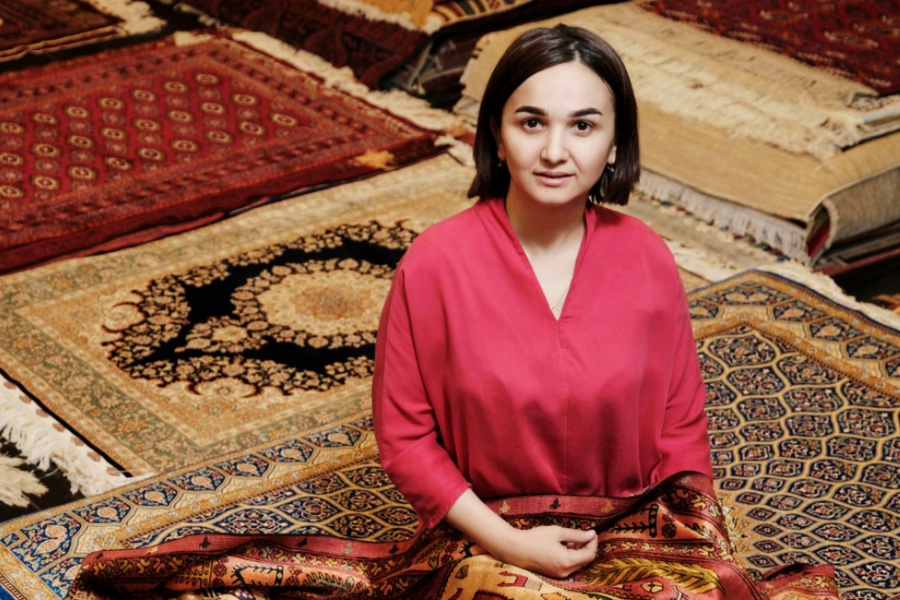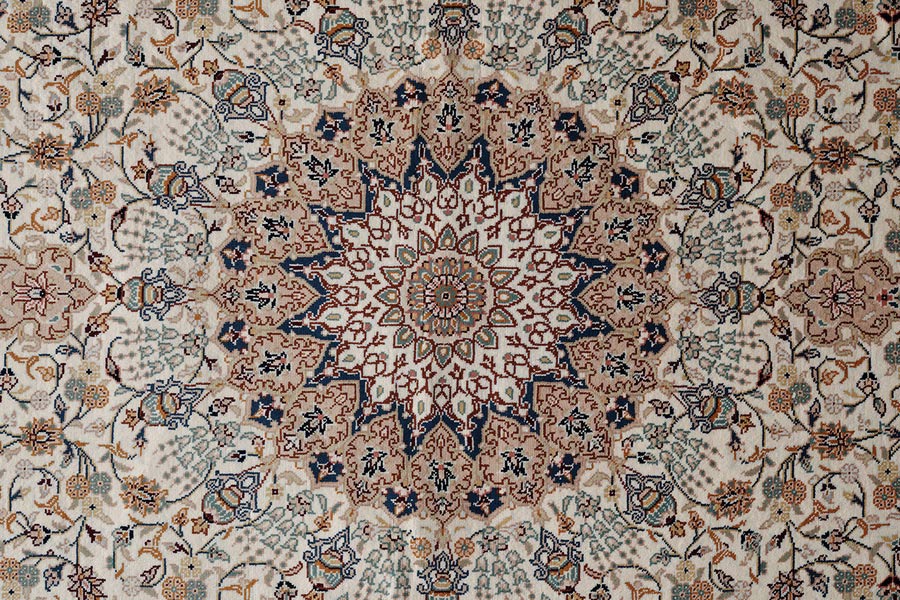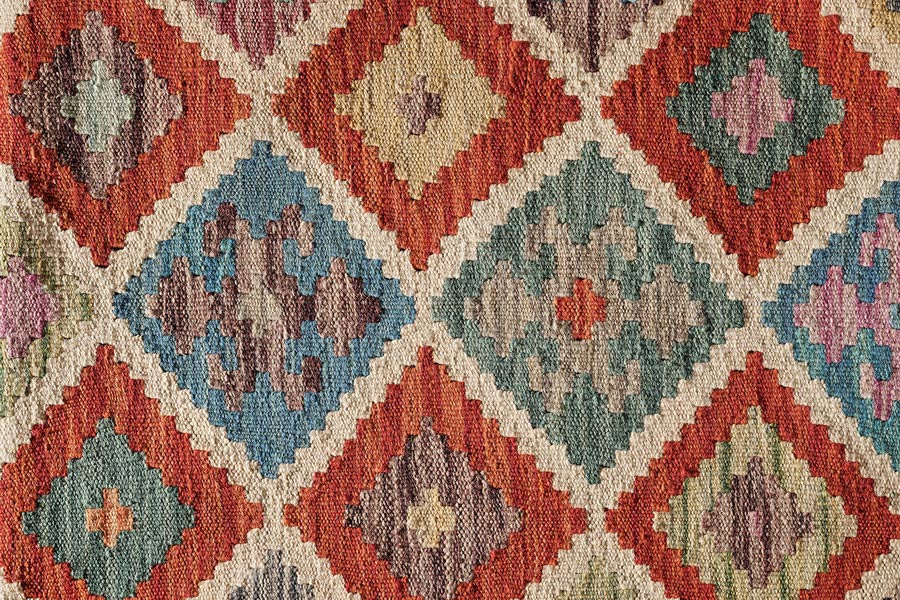
Photos Source: www.2022.homofaber.com
Carpets are one of the enduring symbols of the East. They reflect the elegance and atmosphere of traditional life while bringing warmth and a sense of well-being into the home.
Since ancient times, Bukhara has been a key center for carpet production and trade – a legacy that continues today, thanks in large part to the renowned Bukhara Silk Carpets factory. Founded by master artisan Sabina Burhanova, the factory plays a vital role in preserving this tradition. Burhanova is widely recognized as a leading figure in Bukhara carpet making and is listed among Uzbekistan’s most distinguished craftspeople in the Homo Faber Guide.
Biography
Sabina Burhanova was born into a family of artisans and represents the fifth generation of carpet makers on her father’s side. She began her career in 2002 and spent four years in England, where she pursued college studies. After returning to Uzbekistan, she established her own workshop in Bukhara in 2010. Today, it is considered one of the city's most renowned destinations for handmade carpets.
Burhanova is an active figure in Uzbekistan’s contemporary arts and crafts scene. She regularly participates in exhibitions and collaborative art projects, often working with the Uzbekistan Arts and Culture Development Fund. In 2024, her work was featured at a prestigious exhibition in Venice. She is also preparing to take part in the upcoming Bukhara Biennial, scheduled for autumn 2025.
Style

Sabina Burhanova’s carpets are renowned for their exceptional quality and aesthetic appeal. Each piece is crafted using distinctive patterns and dyed with natural pigments.
Her designs are rooted in the geometric motifs characteristic of Bukhara, often featuring the region’s iconic ornament – the gul (flower).
The primary colors and dyes used in her work include:
- Red, derived from pomegranate skin, is the dominant color in many of her carpets. Additional natural ingredients are used to deepen the shade, lending richness and warmth. In Bukhara’s weaving tradition, red symbolizes fire and vitality—qualities that resonate with Burhanova’s own creative spirit.
- Blue, extracted from the indigo plant, is another prominent color. A staple in Uzbek craftsmanship, it frequently serves as the primary tone for an entire carpet.
- Yellow, obtained from onion peel dye, is used more sparingly. It typically appears as an accent, complementing the stronger base colors.
At Bukhara Silk Carpets, every stage of dye production and fabric coloring is done by hand. Burhanova leads a team of several dozen women between the ages of 18 and 35.
Workshop
Sabina Burhanova’s workshop is located in the heart of historic Bukhara, just 150 meters from the iconic Kalyan Minaret.
The space also includes a showroom where a wide variety of handmade items are available for purchase. Visitors can browse hundreds of carpets in different sizes, patterns, textures, and color palettes – an outstanding representation of Uzbekistan crafts for sale.
Burhanova personally offers tours of the workshop, sharing insights into the history and modern significance of Bukhara carpets, their symbolism, materials, and techniques.
In the spacious main hall, visitors are encouraged to examine the carpets up close – even to sit or recline on them – experiencing firsthand the richness of this living tradition of Uzbek craftsmanship.
Tips for Choosing a Carpet from Sabina Burhanova

A carpet is more than just a decorative element. Mass-produced versions made in large factories tend to lose their appearance, significance, and value over time.
In contrast, handmade carpets are true works of art – durable, resilient, and often appreciated more with age, even after decades of regular use.
When choosing a carpet, it’s important to consider several key factors:
- Origin: Handmade pieces are more valuable due to the skill, time, and tradition involved in their creation.
- Materials: High-quality carpets should be woven from natural materials such as silk, wool, or cotton. These fibers ensure both beauty and longevity.
- Knot density: The number of knots per square centimeter (or inch) is a key indicator of craftsmanship. A higher knot count means the carpet took longer to make and is more intricate, durable, and valuable.
- Dyes: Sabina Burhanova and her team use only natural dyes. These yield deep, vibrant colors that remain stable and do not fade over time.
Visitor Information
- Address: Khuja Nurobod, 200100 Bukhara, Uzbekistan (near Poi Kalyan complex)
- Phone: +99890 5134824, +998 91 9210002
- Opening hours: everyday, 08:00 am – 06:00 pm

